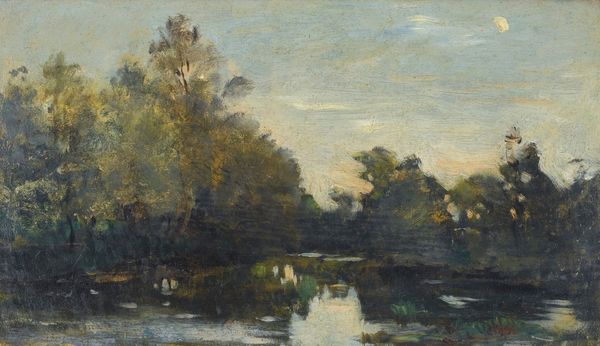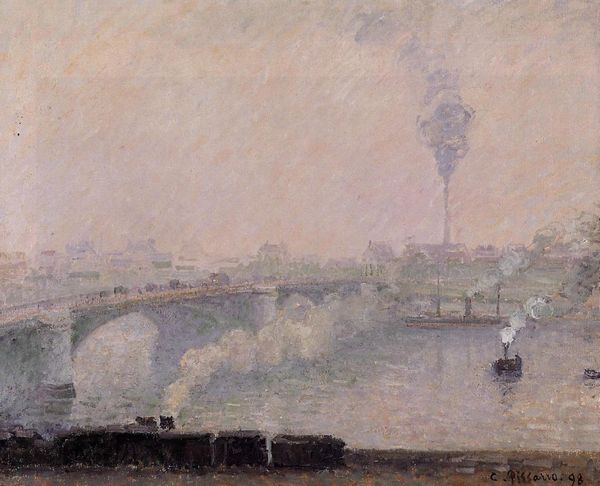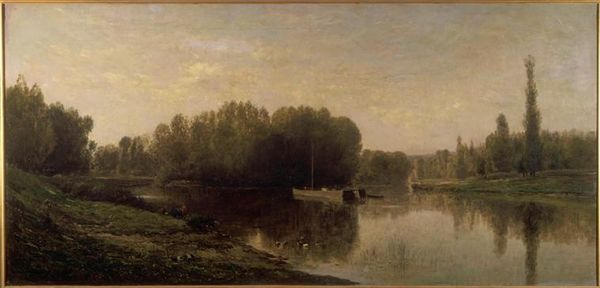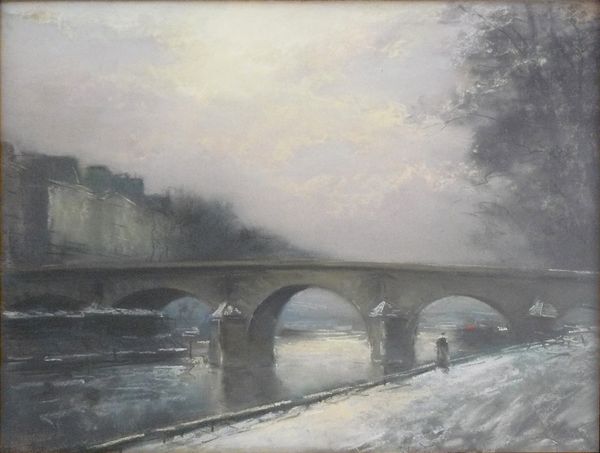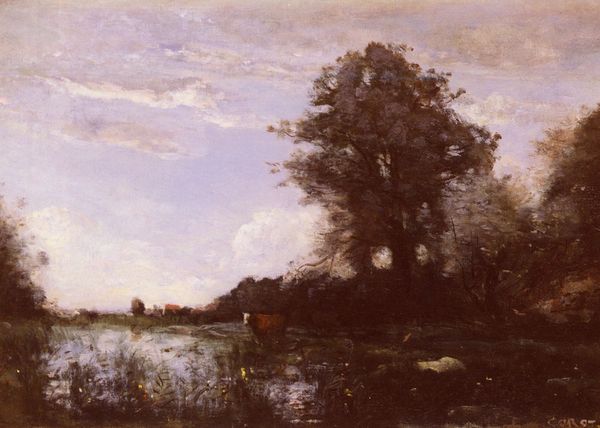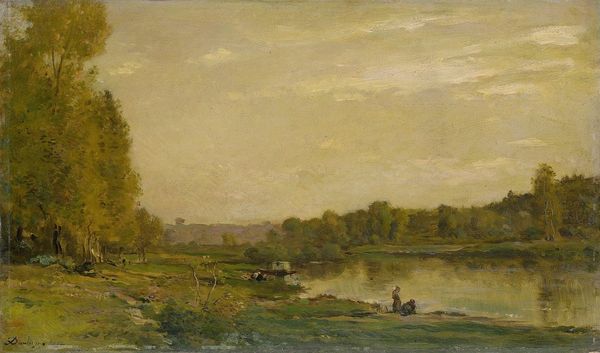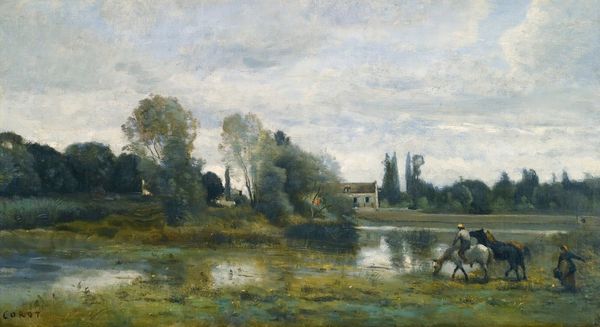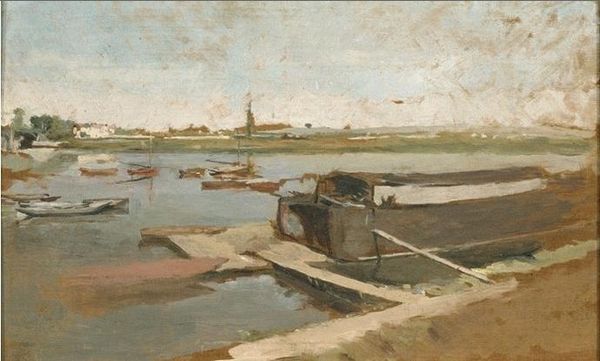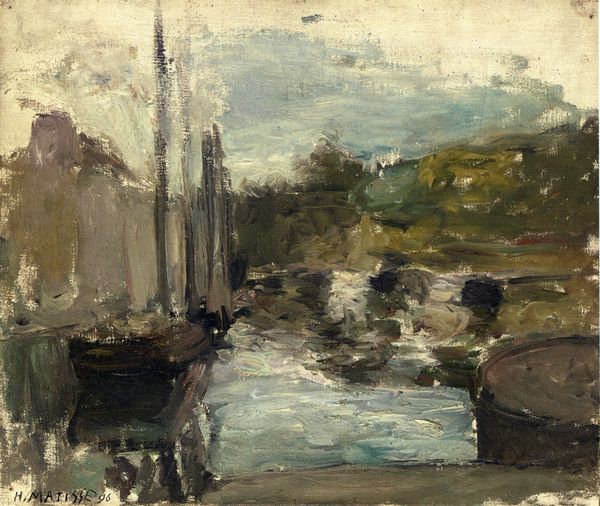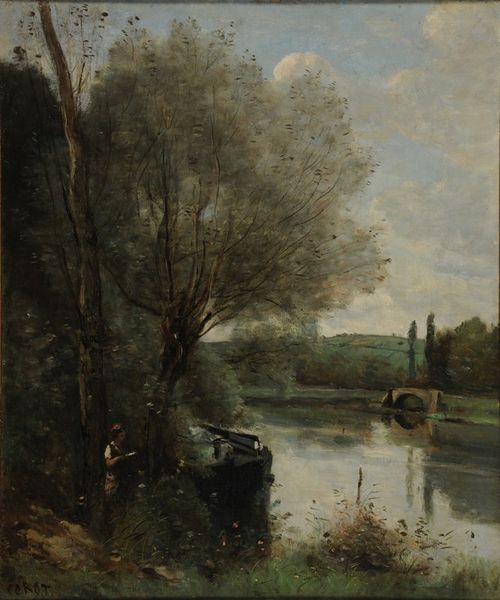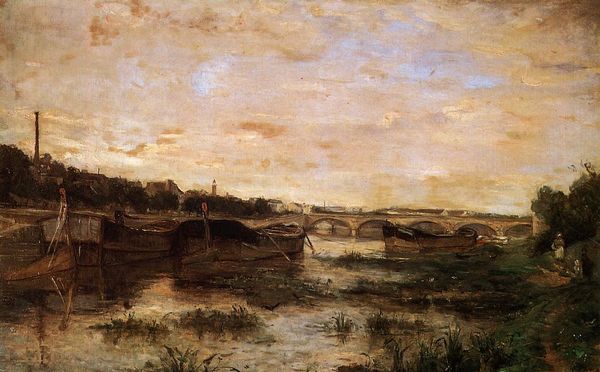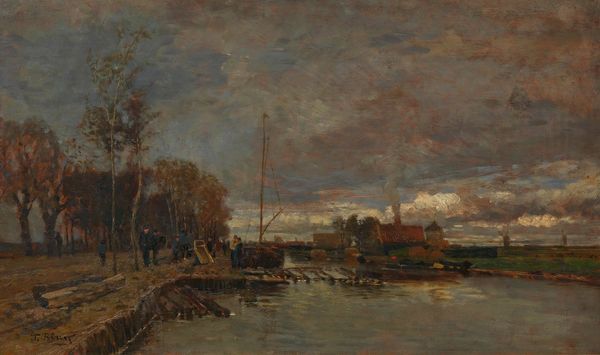
Copyright: Public domain US
Curator: Looking at Matisse’s “Le Pont,” created in 1895, it’s easy to see his early engagement with Impressionism, particularly the plein-air aspect of it. What strikes you immediately about this early work? Editor: It's the painting's quietness. The subdued palette and soft, almost blurred lines create a deeply meditative mood. I'm immediately drawn to the texture of the oil paint itself – it seems so deliberately applied to catch the light just so. Curator: Yes, the impasto adds to the textured feel; however, what I find interesting is the location of where it was created, painted outdoors, in that time and place. You see that as this piece of art being created, but more importantly, as its relation and social and cultural connections, what did those relations produce and represent? How was this modern life depicted back then? Editor: From a formal standpoint, the composition directs the eye across the canvas so satisfyingly – from the sturdy bank in the foreground, along the shimmering water, towards the bridge, and then eventually to those hazy buildings on the horizon. I believe his play with the reflected light throughout helps create cohesion, connecting all the elements into a singular sensory experience. Curator: The social conditions surrounding art production always pique my interest. At this time, modernism began creeping in; therefore, it's important to consider this work against the broader backdrop of Impressionism and its public reception during this period. I imagine it was part of the early Parisian avant-garde to go outdoors to capture the scenes, to take ownership and represent everyday life with all its contradictions, aspirations, and urban realities. Editor: It makes sense. Regardless, even as an early work, you can see glimmers of what would become his signature style—the attention to light and color, simplified forms. You see his ability to abstracting the visual world. Curator: Absolutely, looking at this today makes one really think and learn about all its intrinsic parts. It allows us to consider all aspects and moments captured to preserve its story. Editor: Indeed. “Le Pont” is not only visually satisfying, but a key example to explore when looking into the development and significance of his artistic language.
Comments
No comments
Be the first to comment and join the conversation on the ultimate creative platform.
